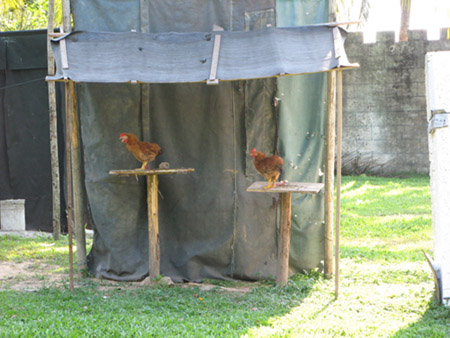Economy
Hainan's eerie boom
By Huang Xiangyang (chinadaily.com.cn)
Updated: 2010-05-26 14:58
 |
Large Medium Small |

Live chickens become targets of a cannon shooting game near the Museum of Women's Detachment of the Red Army in Hainan. [Huang Xiangyang/China Daily]
"As the tide recedes we will be able to find who are naked." And only after dusk falls can we see a clearer picture behind the apparent prosperity of China's southernmost city.
Strolling along the endless beach in Sanya, Hainan, one late May night, I started to get an eerie feeling about this boomtown.
No, it was not that the sand was not fine or the tropical breeze not caressing. It was the "ghost town" look of the never-ending line of high-rises along the beach that got on my nerves: Most of the completed buildings were unlit or scarcely lit, suggesting there were few residents. The lights twinkle like will-o'-the-wisp among the phantom of concrete jungles in the darkness of the night, corroborating news reports that many residential blocks have vacancy rates as high as 80 or even 90 percent.
Locals told me that the houses were all sold, to "migrant residents" who spend only winter in the city, or speculators who want to cash in on the government's ambitious plan to make Hainan "an international tourism island." Property prices have rocketed since the central government unveiled the blueprint at the start of the year. Some high-end apartments reportedly sell at more than 70,000 yuan per sq m, comparable to prices in any other resort in the world.
My tour guide told me the continuous hike in housing prices--which have at least tripled in the past half year -- has put her plan to buy an apartment permanently on hold. Government statistics suggest the annual income for residents in Sanya was 16,000 yuan last year, not enough for one square meter of housing in the city's downtown area. It is reported that for more than 90 percent of the local people, buying a house has become "mission impossible."
Besides developers, local governments undoubtedly are the biggest beneficiaries of rising property prices. Land prices in Haikou, the provincial capital, have reportedly risen 20 times during the past five years, and the figure for Sanya is even higher, indicating local governments have pocketed an astronomical amount in land sales.